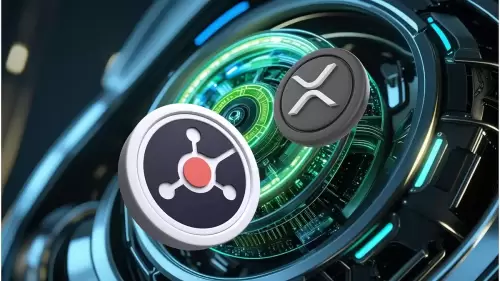 |
|
 |
|
 |
|
 |
|
 |
|
 |
|
 |
|
 |
|
 |
|
 |
|
 |
|
 |
|
 |
|
 |
|
 |
|
在可能永远改变能源储能的未来的飞跃中,中国推出了一个小于硬币的核电池,该核电池比几十年没有一次充电了。

China has unveiled a nuclear battery smaller than a coin and capable of operating for 50 to 100 years without a single recharge, a breakthrough that could revolutionize the future of energy storage.
中国公布了一个小于硬币的核电电池,并且能够在没有一次充电的情况下运行50到100年,这一突破可能会彻底改变储能的未来。
This tiny powerhouse, developed by Beijing-based firm Betavolt, and a second, more ambitious project led by Northwest Normal University, promise a new era where power doesn’t just last for days or months — but for half a century.
这个由北京公司Betavolt开发的小型强国,以及由西北师范大学领导的第二个,更雄心勃勃的项目,保证了一个新时代,该时代的力量不仅持续了几天或几个月,而且要持续半个世纪。
In an age defined by rapidly draining smartphone batteries and the constant search for a usable solar panel angle, the prospect of devices that outlive their power sources seems almost unbelievable. Yet, this is the domain of nuclear batteries, which are slowly emerging from the realm of science fiction.
在一个迅速排干智能手机电池和不断寻找可用的太阳能电池板角度定义的时代,设备的前景几乎令人难以置信。然而,这是核电池的领域,核电池正在慢慢地从科幻小说中浮出水面。
Unlike the lithium-ion cells that have powered our devices for the last two decades, nuclear batteries, powered by radioactive isotopes, offer unmatched longevity and are immune to charge cycles, temperature sensitivity, and the need for replacement.
与过去二十年为我们的设备供电的锂离子电池不同,由放射性同位素提供动力的核电池提供了无与伦比的寿命,并且可以免疫电荷循环,温度敏感性和更换的需求。
This technology, which has been theorized since the 1950s, is now being realized in new prototypes unveiled in China, pushing the boundaries of energy to new frontiers.
自1950年代以来,这项已经经过理论化的技术现已在中国推出的新原型中实现,将能源的界限推向了新的边界。
Here’s a closer look at how these batteries work, what makes them safe, and why this innovation is far more disruptive than its size suggests.
以下是这些电池如何工作,使它们安全的是什么,以及为什么这项创新远比其尺寸所建议的更具破坏性的原因。
What Is a Nuclear Battery?
什么是核电池?
Also known as betavoltaic batteries, nuclear batteries generate electricity by converting energy from radioactive decay — specifically beta decay — into electrical current.
核电池也称为Betavoltaic电池,通过将放射性衰减(特别是β衰减)转化为电流来产生电力。
Unlike nuclear reactors, they don’t involve chain reactions, heat, or moving parts. Instead, they rely on isotopes like Nickel-63 or Carbon-14 that slowly release electrons over decades.
与核反应堆不同,它们不涉及链反应,热量或运动部件。取而代之的是,它们依靠数十年来缓慢释放电子的镍63或碳14等同位素。
Those electrons are captured by semiconductor materials, creating a steady flow of current — tiny in wattage, but immense in lifespan.
这些电子被半导体材料捕获,从而产生稳定的电流流动 - 瓦数很小,但寿命很大。
The technology has existed in theory since the 1950s, but China’s new prototypes are the first to shrink it to a size smaller than a button cell while using safe, modern materials.
自1950年代以来,从理论上讲,该技术已经存在,但是中国的新原型是第一个在使用安全的现代材料的同时,将其缩小到比纽扣池小的尺寸。
The BV100 by Betavolt: A 50-Year Power Source
BETAVOLT的BV100:50年的电源
The first breakthrough comes from Betavolt, which has recently unveiled the BV100, a prototype nuclear battery powered by Nickel-63. This isotope emits beta particles with very low energy, making it far safer than gamma or alpha-emitting sources used in larger radioactive systems.
第一个突破来自Betavolt,该BETAVOLT最近推出了BV100,这是由Nickel-63提供动力的原型核电池。该同位素发出的能量非常低的β颗粒比在较大的放射性系统中使用的伽马或发射α发射源更安全。
Key specifications of the BV100:
BV100的关键规格:
The 100 μW output is ideal for low-power systems that need constant, reliable energy — remote sensors, drones, pacemakers, space probes, and more.
100μW输出非常适合需要恒定,可靠的能量的低功率系统 - 遥感者,无人机,起搏器,空间探针等。
For instance, a sensor network deployed in a national park could monitor wildlife, temperature, and pollution autonomously for decades, providing valuable ecological data.
例如,部署在国家公园中的传感器网络可以自动监测野生动植物,温度和污染数十年,从而提供宝贵的生态数据。
The BV100 is still in the prototype stage, but Betavolt plans to begin mass production of a 1-milliwatt version of the battery soon. This smaller model, about the size of a coin, will be suitable for microelectronic devices like watches, sensors, and possibly wearable health monitors.
BV100仍处于原型阶段,但Betavolt计划很快就开始大量生产电池的1毫米版本。这种较小的型号(大约是硬币的大小)适用于手表,传感器以及可能可穿戴的健康监控器等微电子设备。
Carbon-14 Nuclear Battery: The 100-Year Concept
碳-14核电站:100年的概念
While Betavolt’s design is already in prototype form, scientists at Northwest Normal University in Gansu are working on something even more astonishing — a Carbon-14-based nuclear battery designed to last 100 years.
尽管Betavolt的设计已经处于原型形式,但Gansu西北师范大学的科学家正在研究更令人惊讶的事情 - 一种基于碳14的核电池,旨在持续100年。
Carbon-14 emits low-energy beta particles and has a half-life of over 5,000 years. The university’s researchers plan to embed it into artificial diamond structures, creating a battery that could last for a century with zero maintenance.
碳14发射低能β颗粒,半衰期超过5,000年。该大学的研究人员计划将其嵌入人造钻石结构中,从而创建一个可以持续一个世纪以零维护的电池。
The battery is still in the lab, but early models show incredible potential for:
电池仍在实验室中,但早期型号显示出令人难以置信的潜力:
Safety First: Why Nuclear Doesn’t Mean Dangerous
安全首先:为什么核合并不意味着危险
The idea of carrying a “nuclear battery” might sound alarming, but these devices are incredibly safe.
携带“核电池”的想法听起来很令人震惊,但是这些设备非常安全。
In fact, these batteries could be safer than lithium-ion, which can catch fire or degrade chemically under stress.
实际上,这些电池可能比锂离子更安全,锂离子可以在压力下化学捕获火或降解。
Why the World Needs Ultra-Long-Life Batteries
为什么世界需要超长寿命的电池
While nuclear batteries won’t be replacing your laptop battery anytime soon, they offer unmatched value in mission-critical environments where replacing or recharging is impossible or dangerous.
虽然核电池不会很快替换您的笔记本电脑电池,但它们在关键的任务环境中提供了无与伦比的价值,在这些环境中,更换或充电是不可能或危险的。
Key use cases include:
关键用例包括:
1. Medical Devices
1。医疗设备
Pacemakers and implants currently rely on lithium batteries that need surgical replacement every 5–10 years. A 50–100 year battery would eliminate the need for repeat surgeries and lower healthcare costs drastically.
起搏器和植入物目前依靠每5至10年需要手术更换的锂电池。 50 - 100年的电池将消除对重复手术的需求,并大幅降低医疗保健费用。
2. Space Exploration
2。空间探索
Probes like Voyager or the Mars Rovers need constant, long-term energy in environments where solar isn’t viable. Nuclear batteries offer decade-spanning, uninterrupted power.
在太阳能不可行的环境中,诸如Voyager或Mars Rovers之类的探针需要恒定的长期能量。核电池可提供十年散布,不间断的功率。
3. Defense & Surveillance
3。防御与监视
In remote or hostile areas, sensors, drones, and trackers powered by nuclear batteries could operate autonomously for decades, offering strategic military advantages.
在偏远或敌对的地区,传感器,无人机和由核电池提供动力的跟踪器可以自主运行数十年,从而提供战略性的军事优势。
4. IoT Devices
4。物联网设备
In smart cities and industrial automation, where devices are deployed in hard-to-reach locations, this tech offers reliability and longevity with no need for battery swaps or
在智能城市和工业自动化中,设备被部署在难以到达的位置中,该技术提供了可靠性和寿命,而无需电池交换或
免责声明:info@kdj.com
所提供的信息并非交易建议。根据本文提供的信息进行的任何投资,kdj.com不承担任何责任。加密货币具有高波动性,强烈建议您深入研究后,谨慎投资!
如您认为本网站上使用的内容侵犯了您的版权,请立即联系我们(info@kdj.com),我们将及时删除。
-

-

- 比特币,微观和机构信心:看涨的三杆?
- 2025-08-03 03:41:01
- MicroStrategy的持续比特币积累信号信号是强大的机构信心,可能会重塑加密市场。这是持续牛的开始吗?
-

- Ruvi AI令牌:预售里程碑后即将上涨?
- 2025-08-03 03:31:02
- Ruvi AI的预售成功,CMC上市和即将到来的价格上涨正在转向。这是加密货币中的AI驱动令牌吗?
-

- Ruvi AI:百万富翁制造商的价格飙升了吗?
- 2025-08-03 02:00:59
- Ruvi AI将引起嗡嗡声,成为下一个潜在的“百万富翁代币”。发现其AI驱动的超级应用程序和战略预售如何导致巨大的收益。
-

- DOGE,公用事业硬币和聪明的钱:加密投资的新时代?
- 2025-08-03 02:00:23
- Doge的模因魔术褪色吗?聪明的钱正在注视公用事力硬币。发现为什么专家在不断发展的加密景观中从炒作转移到实质。
-

-

-

- Solana,Wewake和Presales:加密货币空间中有什么热?
- 2025-08-03 01:46:34
- 深入了解Wewake的创新预售以及整体趋势围绕着加密货币投资的未来的嗡嗡声。
-



























































